Data analytics
Big data
Web development
From Raw Data to Insights: How to Implement Big Data Analytics for Your Business
Nadiia Sidenko
2025-02-28
The growing need for Big Data analytics is driven by its ability to improve decision-making, optimize marketing strategies, and enhance customer experiences. Businesses that adopt data-driven decision-making can reduce costs, boost revenue, and maintain a competitive edge. Whether it's personalizing customer interactions, improving supply chain efficiency, or detecting fraud, Big Data analytics enables companies to stay ahead in their respective industries.

What Is Big Data Analytics and Why Does Your Business Need It?
Big Data analytics has become a crucial tool for modern businesses, allowing them to extract meaningful insights from large datasets and optimize their operations. Every industry, from retail to healthcare, generates vast amounts of structured and unstructured data daily. Without proper analysis, this information remains unused, preventing businesses from unlocking its full potential. By leveraging advanced analytics, companies can identify patterns, predict trends, and make data-driven decisions that enhance efficiency and profitability.
Understanding Big Data: Key Characteristics and Components
Big Data is typically defined by three fundamental characteristics, known as the Three Vs:
- Volume – The sheer amount of data generated from various sources, such as customer transactions, IoT devices, and social media platforms.
- Velocity – The speed at which data is created and processed, requiring real-time or near-real-time analytics.
- Variety – The different data formats, including structured (databases), semi-structured (XML, JSON), and unstructured (videos, images, text).
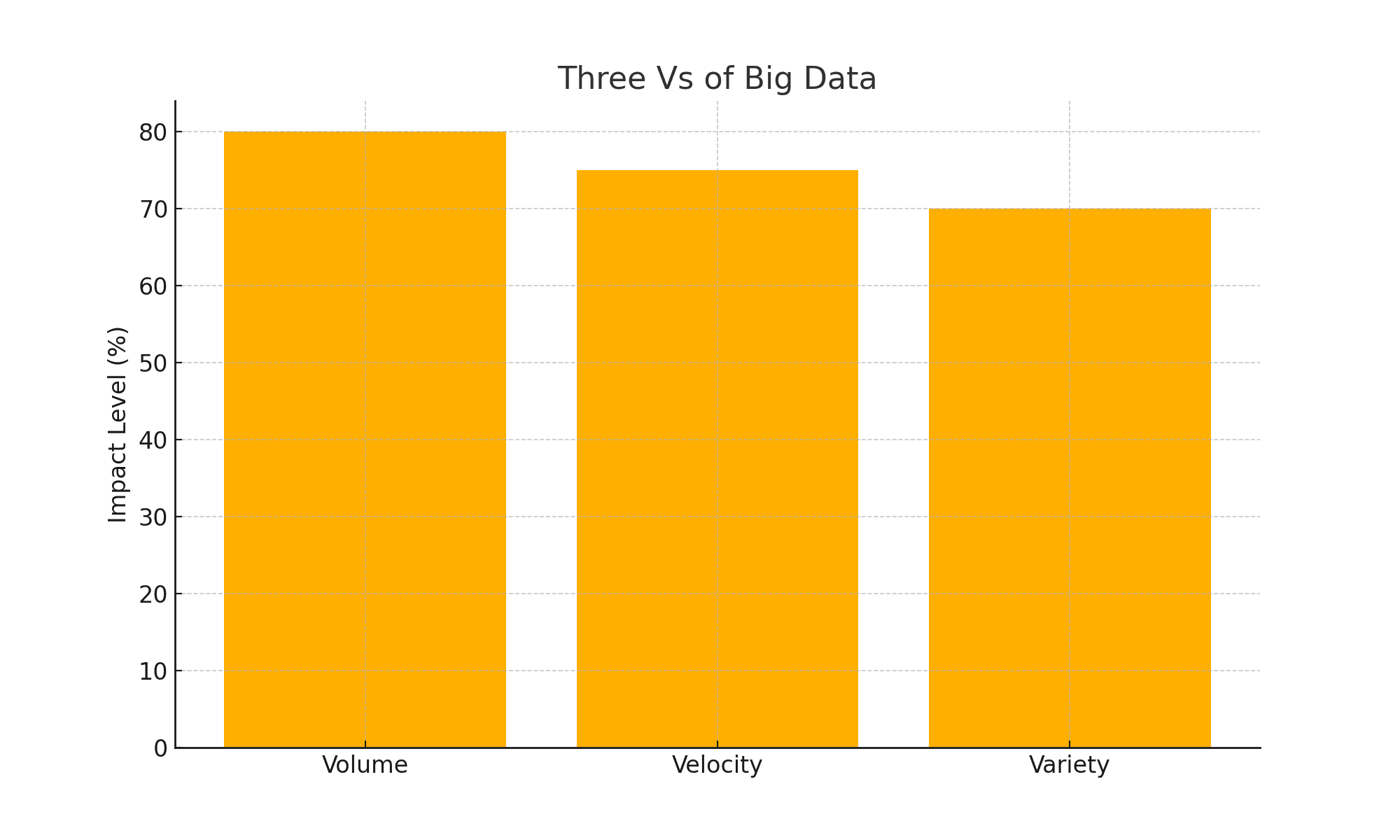
To handle Big Data effectively, businesses must have the right infrastructure in place. This includes scalable storage solutions, data processing frameworks, and business intelligence tools capable of transforming raw information into valuable insights. According to Gartner Research, organizations that integrate Big Data analytics into their operations can significantly improve business performance and innovation. Partnering with experts in Big Data & AI-Powered Analytics Services can help businesses efficiently implement these technologies.
Benefits of Big Data Analytics for Business Growth
The integration of Big Data analytics into business operations provides numerous advantages. One of the primary benefits is enhanced decision-making. Instead of relying on assumptions, businesses can use real-time data insights to make strategic choices. This applies to areas such as customer segmentation, inventory management, and financial forecasting.
Another key advantage is operational efficiency. Automating data processing reduces manual workloads and streamlines workflows. Companies can also improve customer experiences by analyzing behavior patterns and tailoring marketing strategies accordingly. Additionally, predictive analytics helps businesses anticipate future trends, identify risks, and seize new market opportunities.
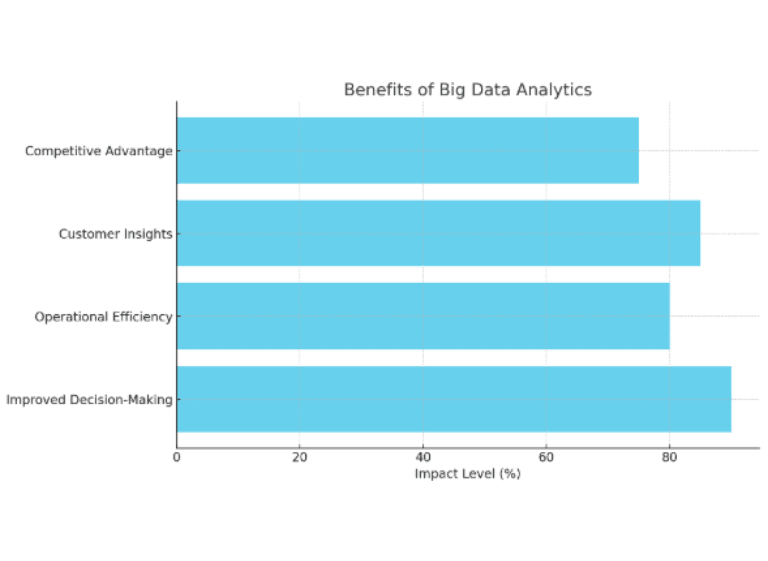
Real-World Use Cases of Big Data in Different Industries
Big Data analytics is revolutionizing industries worldwide. According to a study by McKinsey & Company, companies that successfully integrate Big Data into their decision-making processes see a significant increase in productivity and efficiency. Here’s how different sectors leverage it to drive success:
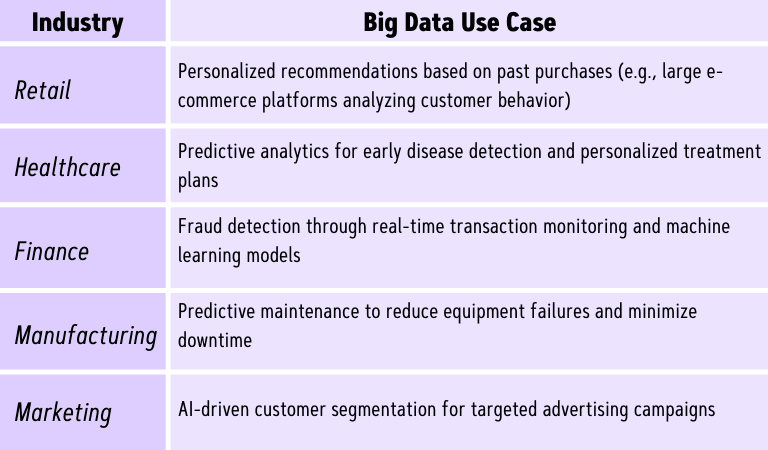
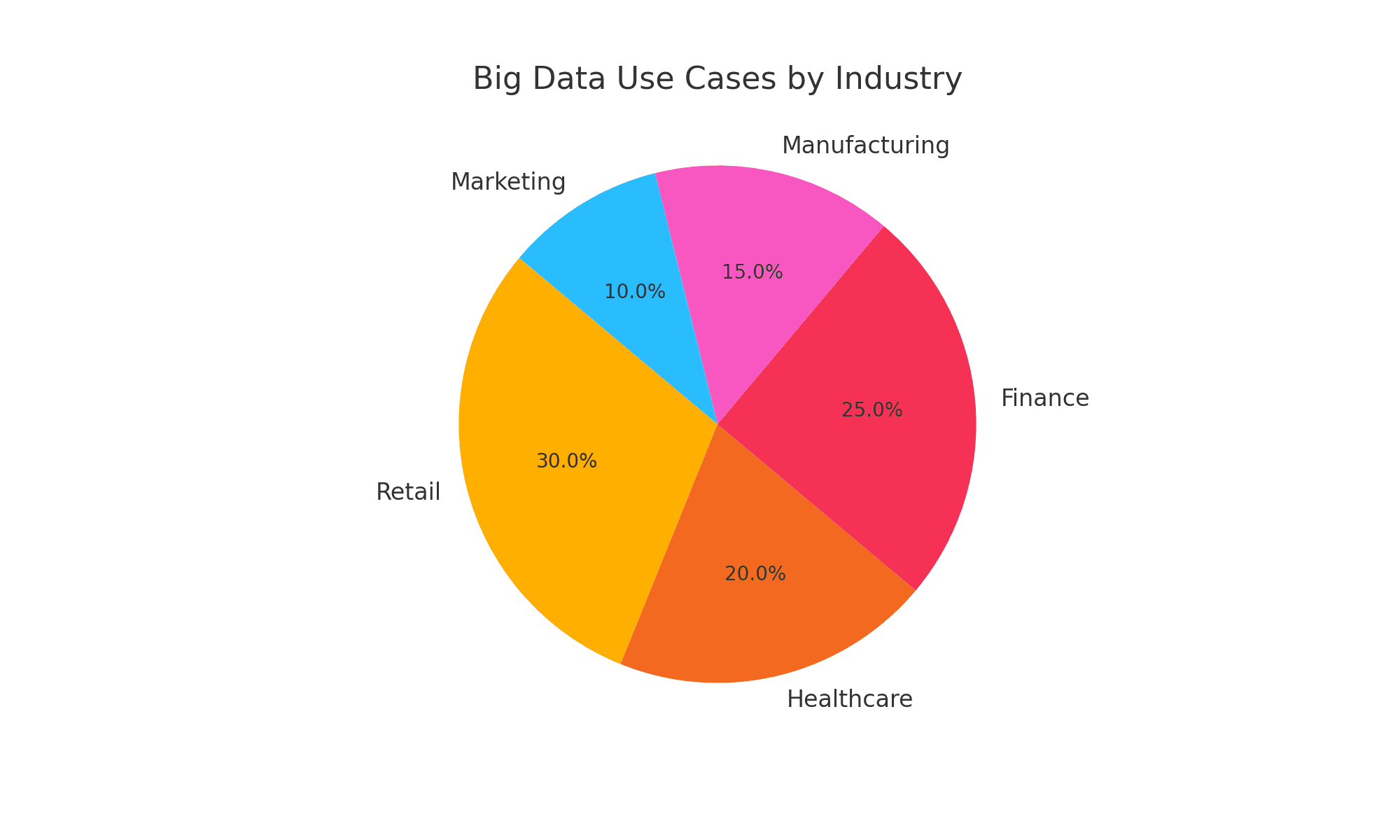
How to Implement Big Data Analytics in Your Business: Step-by-Step Guide
Defining Your Big Data Strategy
Before diving into Big Data analytics, businesses must define their strategy by addressing key questions:
- What business challenges are we solving with data?
- What data sources should we collect from?
- Which Big Data tools and technologies best align with our goals?
- How will we measure success and optimize processes?
Having a well-structured strategy ensures that businesses make the most of their data without wasting resources. Forbes Tech highlights that organizations investing in a well-defined Big Data strategy experience higher returns on investment and improved operational decision-making.
Setting Up Data Collection and Storage
The next step involves collecting and securely storing data. Businesses should:
- Use cloud-based storage solutions like Google Cloud, or Microsoft Azure for scalability.
- Implement data lakes to store raw data and data warehouses for structured data.
- Ensure compliance with data privacy regulations like GDPR and CCPA.
Processing & Analyzing Raw Data
Once data is collected, it needs to be cleaned, transformed, and analyzed. Businesses commonly use ETL (Extract, Transform, Load) pipelines to manage this process:
- Extract – Gather data from multiple sources (web analytics, CRM systems, IoT devices).
- Transform – Clean and structure the data for analysis.
- Load – Store the processed data in a warehouse for business intelligence purposes.
Using tools like Apache Spark and Hadoop can help process large datasets efficiently. According to Google Cloud Big Data Blog, cloud-based data processing platforms enable businesses to scale analytics operations while reducing infrastructure costs.
Best Tools and Technologies for Big Data Analytics
Databases for Big Data Storage & Management
Choosing the right database depends on the type and volume of data. Here’s a comparison of commonly used databases:

Key Challenges in Implementing Big Data Analytics and How to Overcome Them
Managing Data Volume, Variety, and Velocity
Handling massive datasets requires scalable storage solutions and efficient processing frameworks. Businesses should invest in cloud-based platforms that allow real-time data management.
Ensuring Data Privacy and Compliance
With stricter regulations, companies must prioritize data security by:
- Encrypting sensitive information
- Implementing access controls
- Regularly auditing compliance with GDPR, CCPA, and other laws
Overcoming Integration Challenges
Businesses often struggle to merge data from multiple sources. Using data integration tools like Apache NiFi or Talend can help consolidate disparate datasets into a unified system. IDC Big Data & Analytics reports that organizations using integrated data solutions achieve higher data accuracy and efficiency.
How to Measure the Success of Your Big Data Implementation
To evaluate the impact of Big Data analytics, businesses should track key performance indicators (KPIs):
- Data Processing Speed – How quickly insights are generated
- Cost Savings – Reduction in operational expenses due to automation
- Customer Retention Rates – Impact of personalized marketing and engagement
- Revenue Growth – Direct correlation between analytics and financial performance
Statista – Big Data Market Insights provides extensive market data and trends, showing that data-driven organizations outperform competitors in revenue growth and efficiency.
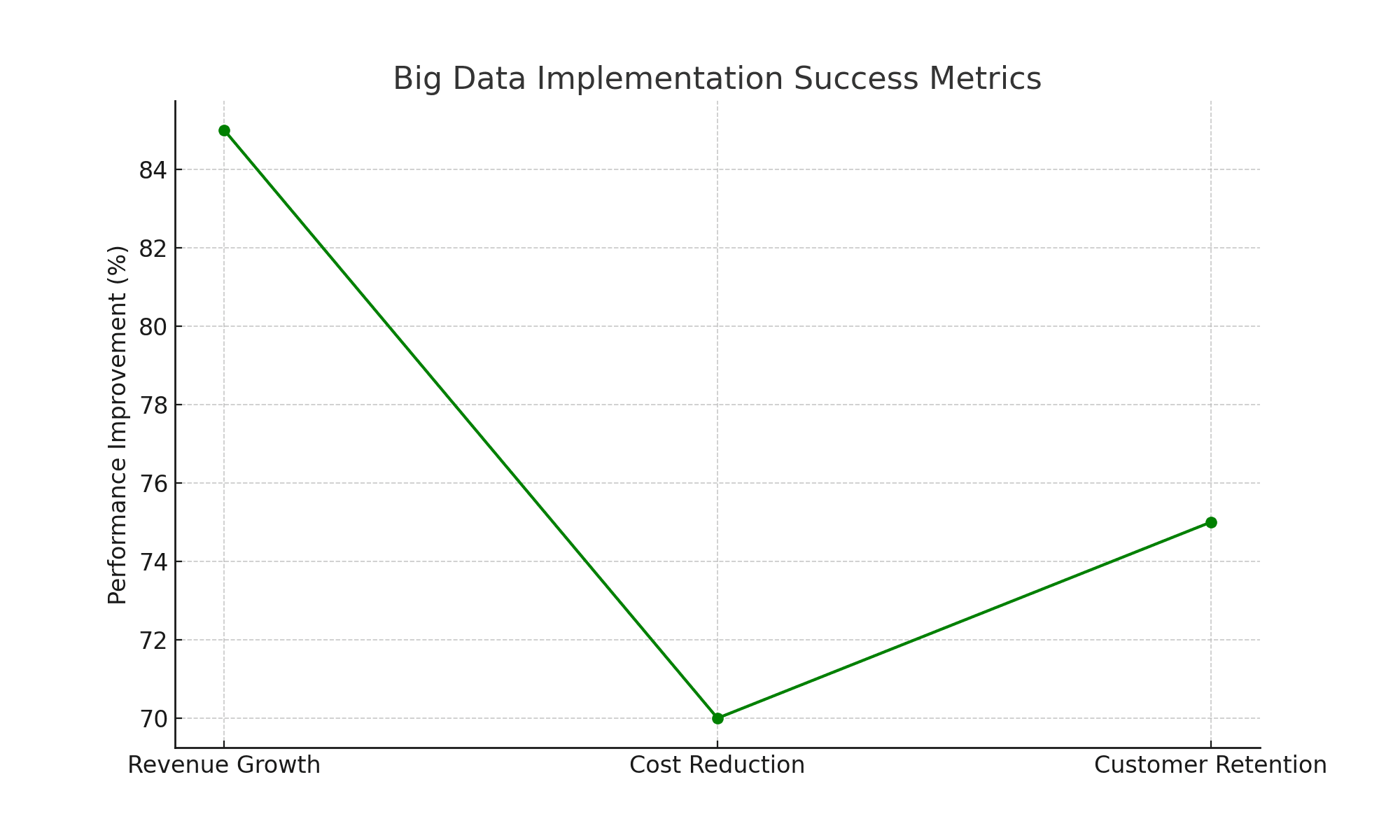

Conclusion & Next Steps for Data-Driven Business Growth
Big Data analytics is no longer an optional investment—it’s a necessity for businesses aiming to remain competitive. By implementing a structured approach to data collection, processing, and analysis, companies can unlock valuable insights that drive efficiency and profitability.